
Date: July 23, 2021
Location: Lat: 38.134593°, Lon: -62.304282°
Dive depth range: 3,177 - 3,238 meters (10,423 - 10,623 feet)
Access Dive Summary and ROV Data
During Dive 16 of the 2021 North Atlantic Stepping Stones expedition, we observed several sea stars, including some actively feeding on other organisms. These kinds of in situ observations increase our basic understanding of deep-ocean ecosystems and how the animals in these ecosystems behave and interact with each other. Video courtesy of NOAA Ocean Exploration, 2021 North Atlantic Stepping Stones: New England and Corner Rise Seamounts. Download largest version (mp4, 75 MB).
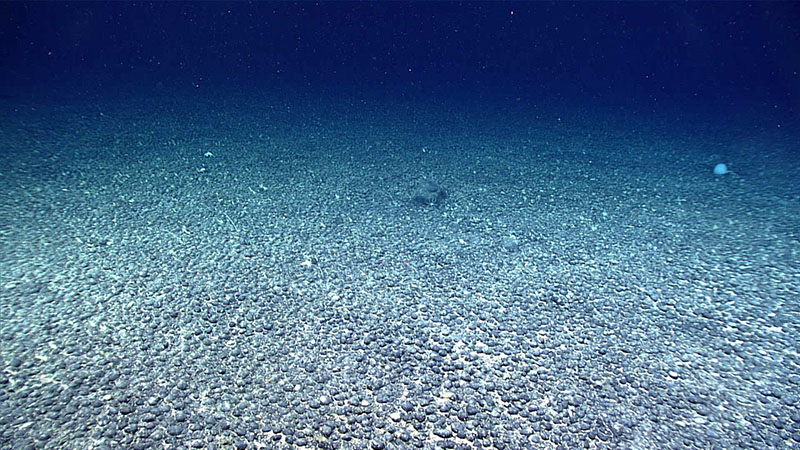
Upon arrival on the seafloor at Gosnold Seamount on Dive 16 of the North Atlantic Stepping Stones expedition, we came across an extensive field of ferromanganese nodules that continued the entire length of the bottom transect. The nodule field was initially thought to be a sediment-free, ferromanganese-coated pavement, but on inspection with remotely operated vehicle Deep Discoverer’s manipulator arm, all of the nodules were found to be loose and sitting within white, partially fine-grained sediment that was biological in origin. Image courtesy of NOAA Ocean Exploration, 2021 North Atlantic Stepping Stones: New England and Corner Rise Seamounts. Download largest version (jpg, 1.8 MB).
Dive 16 of the 2021 North Atlantic Stepping Stones expedition took place on Gosnold Seamount, within the New England Seamount Chain, starting at a depth of approximately 3,200 meters (2 miles). Geology took center stage during the dive, as our arrival on the bottom was met with a spectacular and unexpected field of ferromanganese nodules blanketing the seafloor. This nodule field continued for the entire length of the bottom transect, until the slope gradient began to increase and larger ferromanganese nodules and ferromanganese-encrusted cobbles and boulders entered into the mix. Biological observations were mostly on the small scale for the dive, with high densities of certain species, including small primnoid octocorals, sponges, and Parapagurus sp. crabs, seen throughout. We also saw several synaphobranchid eels as well as other sessile and mobile fauna.
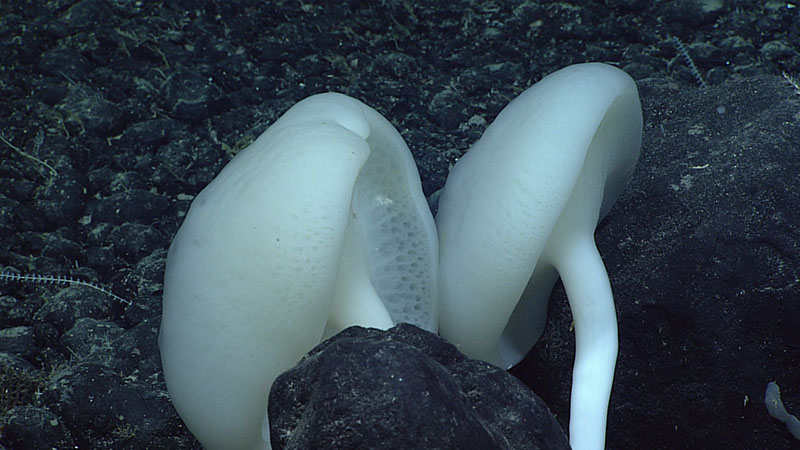
As we moved upslope during Dive 16 of the 2021 North Atlantic Stepping Stones expedition and began to encounter larger ferromanganese boulders mixed with smaller nodules, we saw several of these larger rosellid “mushroom” sponges. Image courtesy of NOAA Ocean Exploration, 2021 North Atlantic Stepping Stones: New England and Corner Rise Seamounts. Download largest version (jpg, 981 KB).
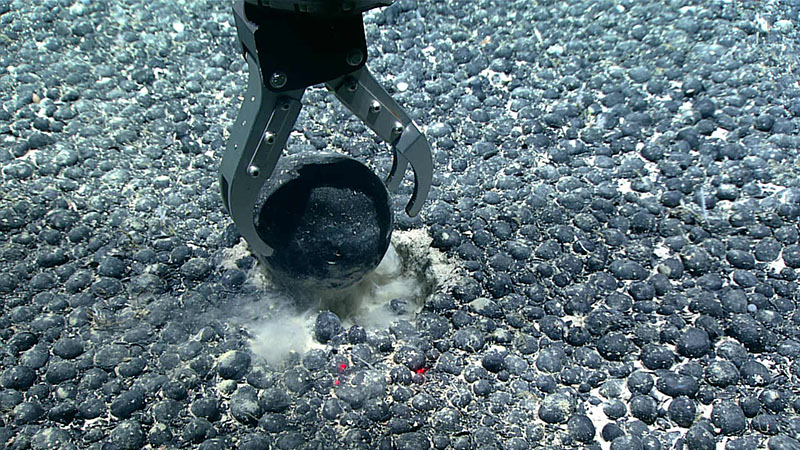
A ferromanganese-coated cobble more than 10 centimeters (4 inches) in diameter was collected during Dive 16 of the 2021 North Atlantic Stepping Stones expedition. We also collected many smaller ferromanganese nodules and sediment using the remotely operated vehicle’s suction sampler. The size and distribution of the nodules remained similar throughout the length of the ferromanganese nodule field traversed during the dive. Image courtesy of NOAA Ocean Exploration, 2021 North Atlantic Stepping Stones: New England and Corner Rise Seamounts. Download largest version (jpg, 1.6 MB).
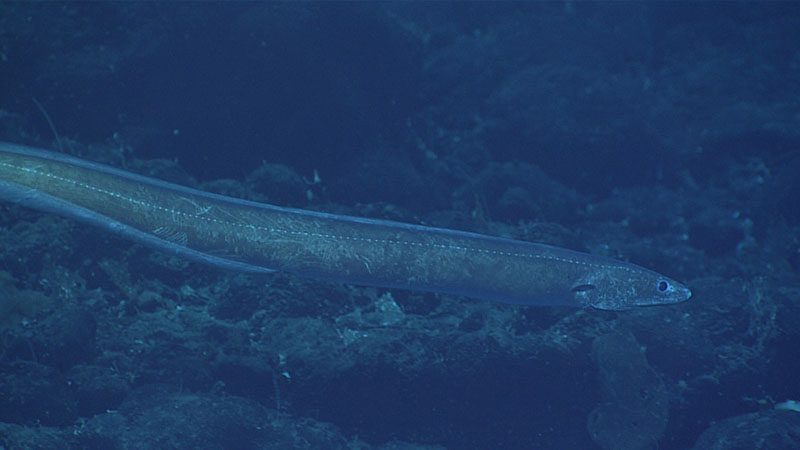
Several of these cutthroat eels in the family Synaphobranchidae were present along the track for Dive 16 of the 2021 North Atlantic Stepping Stones expedition and may represent range extensions and deepest depths for some of the species once identified. This one was seen at a depth of approximately 3,170 meters (10,400 feet). Image courtesy of NOAA Ocean Exploration, 2021 North Atlantic Stepping Stones: New England and Corner Rise Seamounts. Download largest version (jpg, 764 KB).
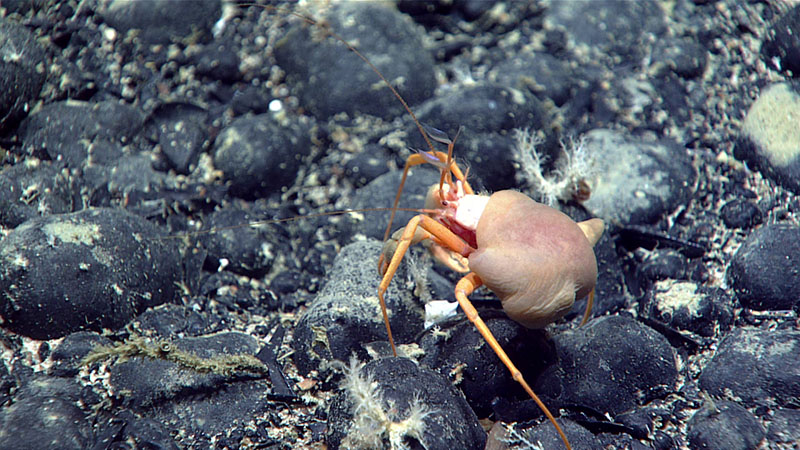
These Parapagurus sp. crabs with corals in the genus Epizoanthus on their backs were seen throughout Dive 16 of the 2021 North Atlantic Stepping Stones expedition. The more movable ferromanganese nodule field encountered during the dive also had a selection of smaller fauna, such as sponges, stalked and unstalked crinoids, isopods, stalked tunicates, worm tubes, and chitons. Image courtesy of NOAA Ocean Exploration, 2021 North Atlantic Stepping Stones: New England and Corner Rise Seamounts. Download largest version (jpg, 1.4 MB).

This benthopelagic jellyfish in the genus Ptychogastria was observed at a depth of 3,170 meters (10,400 feet) during Dive 16 of the 2021 North Atlantic Stepping Stones expedition. This was one of several of these beautiful little animals seen during the dive. Image courtesy of NOAA Ocean Exploration, 2021 North Atlantic Stepping Stones: New England and Corner Rise Seamounts. Download largest version (jpg, 1.2 MB).
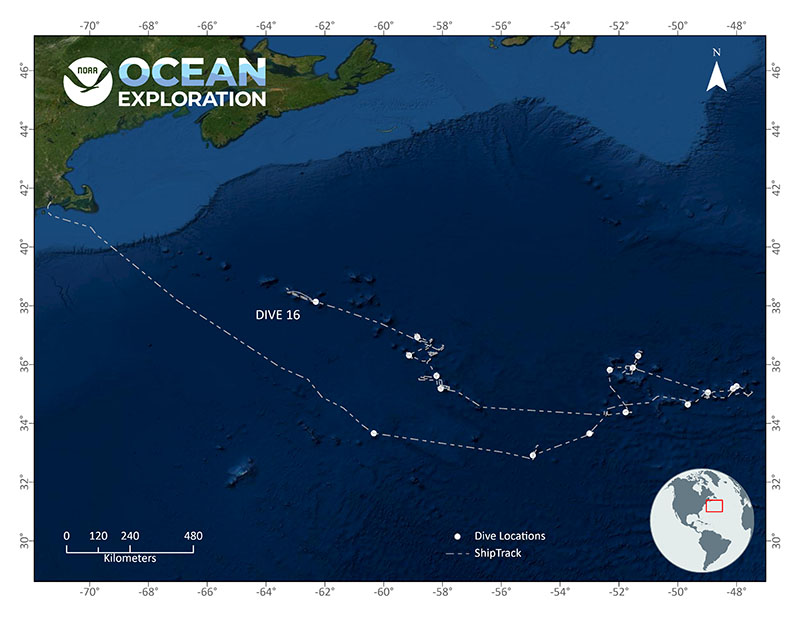
Location of Dive 16 of the 2021 North Atlantic Stepping Stones expedition on July 23, 2021. Map courtesy of NOAA Ocean Exploration, 2021 North Atlantic Stepping Stones: New England and Corner Rise Seamounts. Download largest version (jpg, 3 MB).
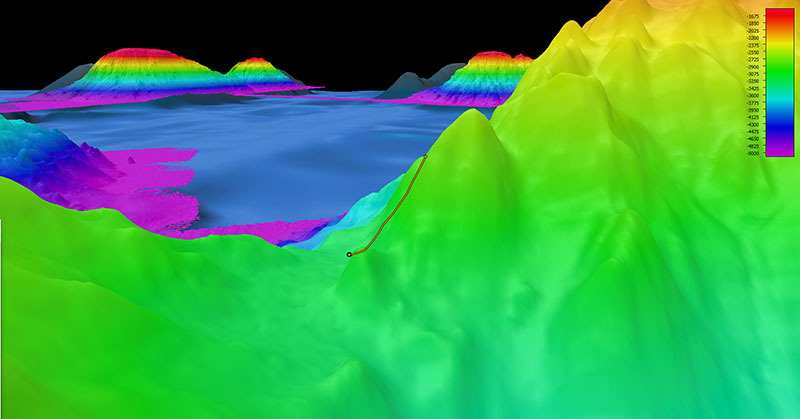
Image showing the dive track of Dive 16 of the 2021 North Atlantic Stepping Stones expedition. Scale is water depth in meters. Image courtesy of NOAA Ocean Exploration, 2021 North Atlantic Stepping Stones: New England and Corner Rise Seamounts. Download largest version (jpg, 576 KB).